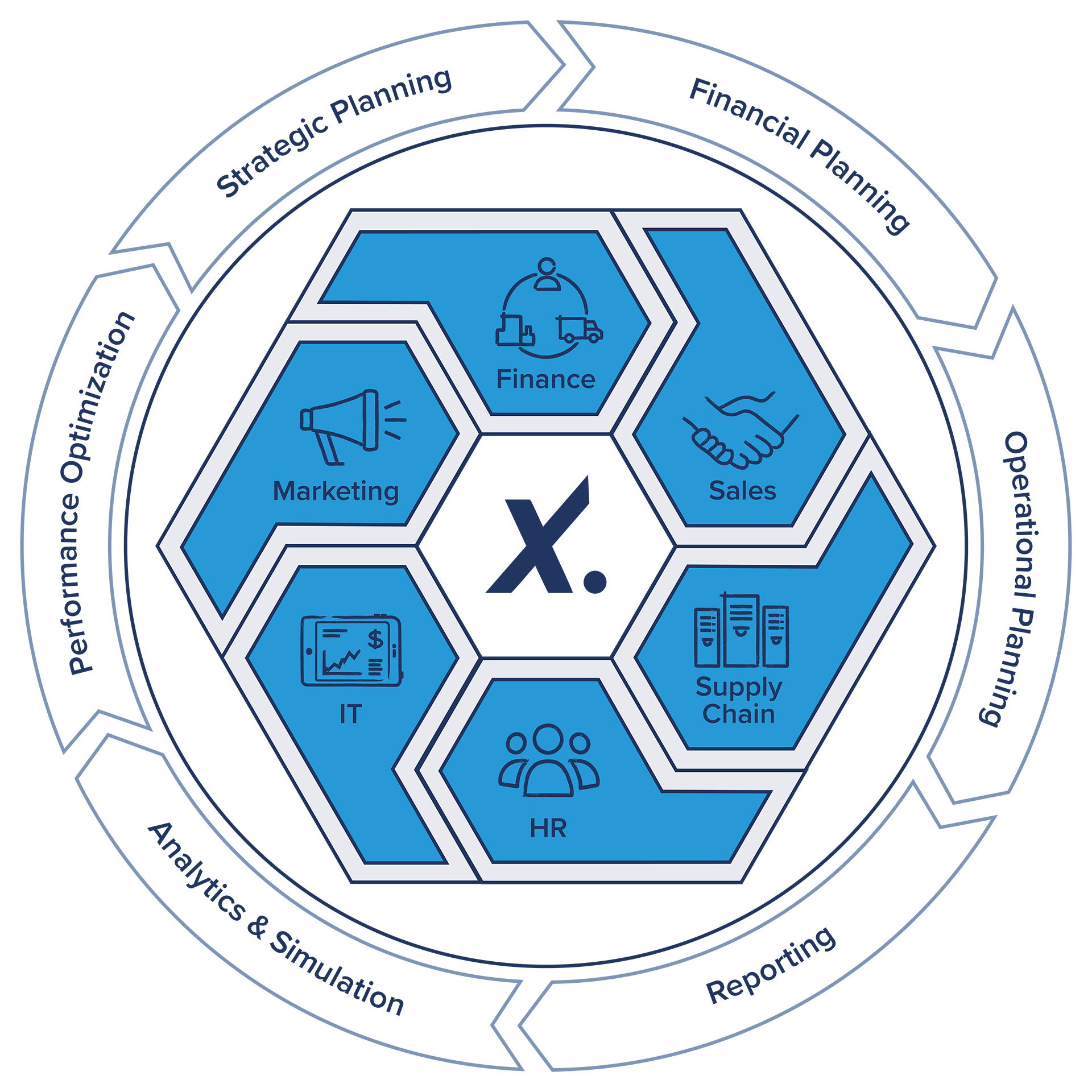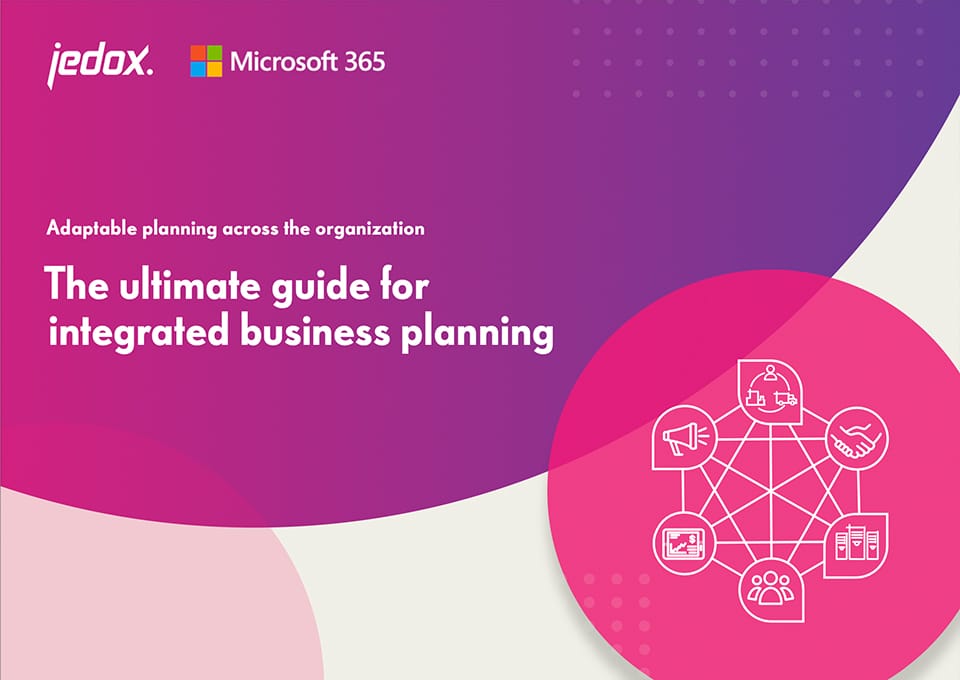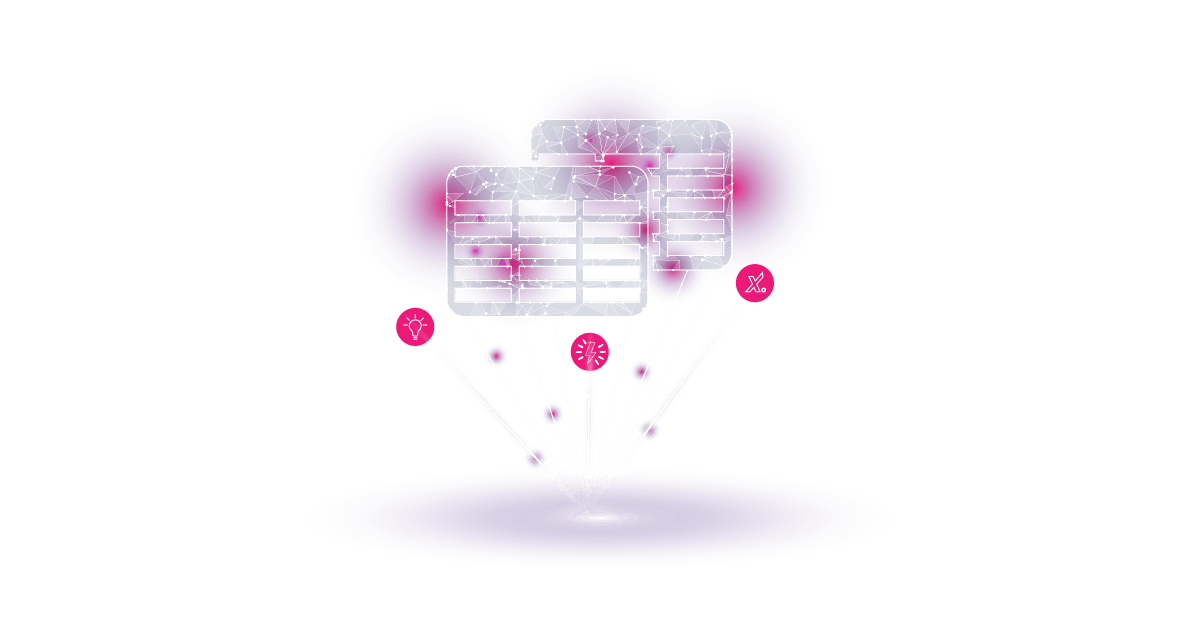
What is EPM?
Occasionally, you should take a fresh look at your business planning and performance management. What has been working well? What has not? Where to begin? Let us go back to the basics for a few minutes: From the definition of EPM through its business value. How does EPM fit within an organization’s existing technology architecture? Why are modern organizations seeking to improve their performance management capabilities? And what can we expect in the future of finance?
What is EPM?
Enterprise performance management (EPM) is the set of business practices, processes and tools that allow organizations to better plan and evaluate their strategic goals, including the following management processes:
- Budgeting, planning, forecasting
- Modeling the value creation of a company
- Consolidation of the results
- Performance analysis
Key Performance Indicators (KPIs) such as sales, overhead and operating costs as well as the Return on Investment (ROI) are generally used for planning, measuring, and analyzing performance. There are several synonyms for Enterprise Performance Management (EPM): Corporate Performance Management (CPM), Business Performance Management (BPM), and Financial Planning & Analysis (FP&A).

A brief history of EPM
The concept of EPM has been around for decades. Before advancements in computer and cloud technology, EPM processes and solutions were managed manually via pen and paper, long in-person meetings, phone calls, and the like.
In the 1970s and 80’s the first crude spreadsheet software tools such as Lotus 1-2-3 and VisiCalc became available, and it started to be used for accounting purposes as well as collection of budgeting and financial information for reporting and analysis. Spreadsheets allowed finance teams to improve budget and report creation while replacing manual worksheets.
The functionality and reach of EPM solutions started to expand following the emergence of e-mail and other connected technologies, which in turn enabled multiple parties to collaborate on creation of joint financial reports. Connectivity has led to the establishment of more advanced software solutions for EPM which towards the end of the 1990s, enabled reporting and controlling automation and has simplified accounts consolidation efforts.
The “revolution” of EPM started during the Dot Com Era. Even though there wasn’t a true EPM technology in place yet, multiple software companies hypothesized how EPM could be designed, tailored to industry-specific needs and used to achieve a greater degree of reporting, controlling and analytic capabilities along with management automation.
From our perspective, the technology needed to advance this field further caught up with existing ideas around 1995 when technology-enabled benefits prompted companies to move away from paper-based practices, ditch old DOS-based systems and embrace newer and more efficient technology.
Is EPM a methodology or a tool?
It is important to clarify that EPM is not just a software – it is a business endeavor to seek effectiveness and measure and enhance performance in your organization. It enables management to better respond to challenges as well as opportunities on a project, section, operational line, geographic area and on the corporate or enterprise level.
Some organizations still rely heavily on the use of Microsoft Excel for data collection and validation as well as for their budgeting, forecasting, and reporting activities. These processes are extremely time-consuming and error-prone, which keeps employees in a constantly reactive state and spending the bulk of their time meeting only basic needs of the organization. There is no time left for value-adding activities such as monthly forecasts, what-if modeling scenarios and building strategic partnerships. EPM should be complemented by a robust Enterprise Performance Management software solution, which is a crucial part of improving the EPM process and making it as efficient and effective as it can be.
The scope of EPM
In a perfect world, an EPM software would manage organization-wide planning, reporting, and analysis.
Traditionally, organizations used to look at those processes as part of their “Office of the CFO” activities. With that approach, department managers such as sales, HR, and operations had to create their own subset or personal interpretation of the financial plan. As an example, sales managers must take the revenue goals and split it between different revenue types: lines of business and quota carriers; HR and operations managers must build their capacity planning, etc. EPM bridges the gap between these different planning silos and supports planning, analysis, and reporting of business results, KPIs and more.
You can understand this as a process:
- Collect organization-wide financial and non-financial data.
- Analyze and calculate major KPIs.
- Set organizational, strategic, high-level goals and targets.
- Cascade goals into functional areas of the organization.
- Set targets for select business drivers.
- Measure success and re-forecast.
Connecting the dots between EPM, ERP, and BI
Enterprise Resource Planning (ERP) and Customer Relationship Management (CRM) systems are primarily transactional systems. The primary role of these types of systems is to optimize and capture data from day-to-day processes and transactions to meet specific goals.
The name of Enterprise Resource Planning (ERP) may be misleading. Enterprise Performance Management (EPM) systems are different and are specifically designed to be complimentary to systems such as ERP and CRM.
An Enterprise Performance Management system’s role is to provide an overview of the entire organization’s performance based on the data that was captured using these other systems in a symbiotic relationship. In addition, Enterprise Performance Management, in most cases, allows the updating of organizational planning data based on various business drivers and calculation of business rules (i.e. discounts, allocations, growth, etc.)
Business Intelligence (BI) systems offer some functionalities that can overlap with EPM systems. As an example, creating an “Actual vs. Budget” report is a functionality that may be supported both by BI and EPM systems.
EPM Today
Over the past couple of decades, EPM solutions evolved from Windows-based client/server systems to Internet-enabled, web browser-based applications. Today, there’s an increasing demand for cloud based EPM software, also known as software as a service (SaaS). The cloud offers a more affordable alternative for EPM that lowers costs because it eliminates costs such as the need for companies to hire additional IT staff. With no costly infrastructure to support, resources can be invested in strategic growth opportunities, while employees can focus on more value-added tasks.
During the last decade, we have seen the emergence of EPM solutions with incredibly complex stand-alone, modular, and cloud-based products that push the envelope of performance management. EPM is used to measure performance across all areas of the business in a consistent, efficient manner and deliver enhanced results. It also effectively links operational and business support functions together and consolidates information through financials.
Enterprise Performance Management is more than just a system – it offers three key advantages
EPM is an organizational platform to manage and dynamically align strategic planning and goals with people and processes. EPM systems offer the opportunity to merge silos and disconnected planning processes together and allow more flexible, accountable, and transparent performance tracking and goal setting across the organization. It does that by offering three key advantages:
- Automation of financial planning, reporting, and consolidation processes, eliminating errors and labor-intensive work.
- Acceleration of cycle times, delivers valid figures and creating more time for value-adding strategic work and analysis.
- Unification of finance and operations according to a single plan, as integrated planning enables improved cross-departmental collaboration.
Optimization potential in different departments
Enterprise Performance Management is typically assumed to be part of Finance or Controlling. However, thanks to faster and much simpler implementation of automated planning and forecasting processes through EPM solutions, they are also becoming more and more useful for other departments. EPM software can be very useful for improving accuracy and efficiency in sales, human resources, marketing, and procurement.
Sales teams optimize the sales funnel with EPM
Plans can be derived based on the figures that every modern sales tool generates automatically. These help you and your team to restructure a sales funnel or to make an existing funnel even more effective. With the forecasting possibilities of a modern EPM solution, you can determine targets which are continuously monitored and adjusted by your team in real time. Various adjustments to the sales funnel are thus planned and controlled by sales teams in a more data-driven, collaborative, and active approach.
HR teams use EPM to better manage personnel development
The HR team identifies new requirements and needs at an early stage and adopts them for planning. Defining goals and have them continuously compared with the current data stream, which is generated from sales tools, for example. The distribution of variable salaries is thus always displayed in an up-to-date format with just a few clicks. In addition, forecasts for budget planning in HR are also possible.
Marketing teams use EPM to monitor campaign performance
Get an integrated view of the performance of your marketing activities and be capable of deciding faster which actions the marketing team should pursue, improve, or drop. The advantage is that reporting is consolidated and does not have to be compiled manually from several data points. This makes it possible to adapt existing campaigns more quickly and easily.
Procurement teams better control the supply network with EPM
Manage key figures about capacities and quality of the requested goods in a EPM solution for an effortless overview. Optimize cost structures and transparency for procurement in your organization. Your team can be better informed and react faster to price increases of a supplier, which will save money and increase productivity.
Putting EPM data in the context of finance helps to put otherwise senseless and technical data into a simpler perspective and enables managerial decisions to be Explainable, Defendable and Executable. Being able to explain, defend, and execute decisions is key to improving long term business strategy, among other things.
EPM Software
Software-supported Enterprise Performance Management provides an important link to the next step in value-creation. It looks to the future, with the capabilities of creating forecasts based on actual analyses. Originally, EPM was only used by finance departments. It has since expanded significantly and is designed for use throughout numerous company functions and can be successfully implemented within the framework of integrated planning.
Applications: Modern EPM software supports functionalities across the organization and can also be used as an extension tool to increase the power of business intelligence systems. EPM software provides planning, budgeting, and forecasting capabilities using dashboards to display key organizational data.
Functionality: EPM software helps companies increase efficiency by eliminating or extending spreadsheets and improving planning and reporting processes through centralized databases, workflow, and process control. This also helps increase accountability across the enterprise by aligning strategic, financial, and operational goals, expanding budgeting participants and providing stakeholders with the latest data available with just a few clicks.
Outlook: Proven AI solutions for modern planning
In the Digital Age, data-based decisions are becoming increasingly important for business. As a result, the demands on the financial sector are also changing. For controlling, this means using predictive analytics to produce more forward-looking analyses and increasingly decision-relevant forecasts instead of focusing on past tense reports.
A further goal is also the extensive automation of routine tasks to gain more freedom for strategic analyses and data interpretation. This can be achieved with new tools from the fields of AI and machine learning. And with cloud solutions, they are readily available today with nearly unlimited, on demand computing power. Jedox uses the data hub of its EPM software platform for AI applications.
Data management and data integration as the basis for advanced analytics
The prerequisite for forecasts derived with AI support (and other findings) is a clean, comprehensive database. Data management and data integration as core processes of the classic BI environment will therefore remain crucial to success for the next generation of data analytics.
Pilot projects conducted by Jedox have shown that AI-supported analyses within the framework of the Jedox platform very quickly generate business value. More than 50 predefined connectors and the powerful ETL functionality of the Jedox BI platform form the foundation for integrating any data source and large amounts of data.
Conclusion
Implementing the right solution that has been custom fit to meet the needs of your organization will take time. This is where important conversations with your EPM solution provider are vital to success:
- Have organizational needs been carefully factored into your EPM solution?
- Does your team need special coding or programming skills to use it?
- Are dashboards easily customizable to fit your needs?
- Is the software adaptable and allows you to create your own models?
- Does the software offer quick and easy connection to your existing databases?
- Does the solution offer industry-leading implementation times?
A truly modern EPM solution provides your organization with a solid foundation to increase agility, flexibility, and resilience.





